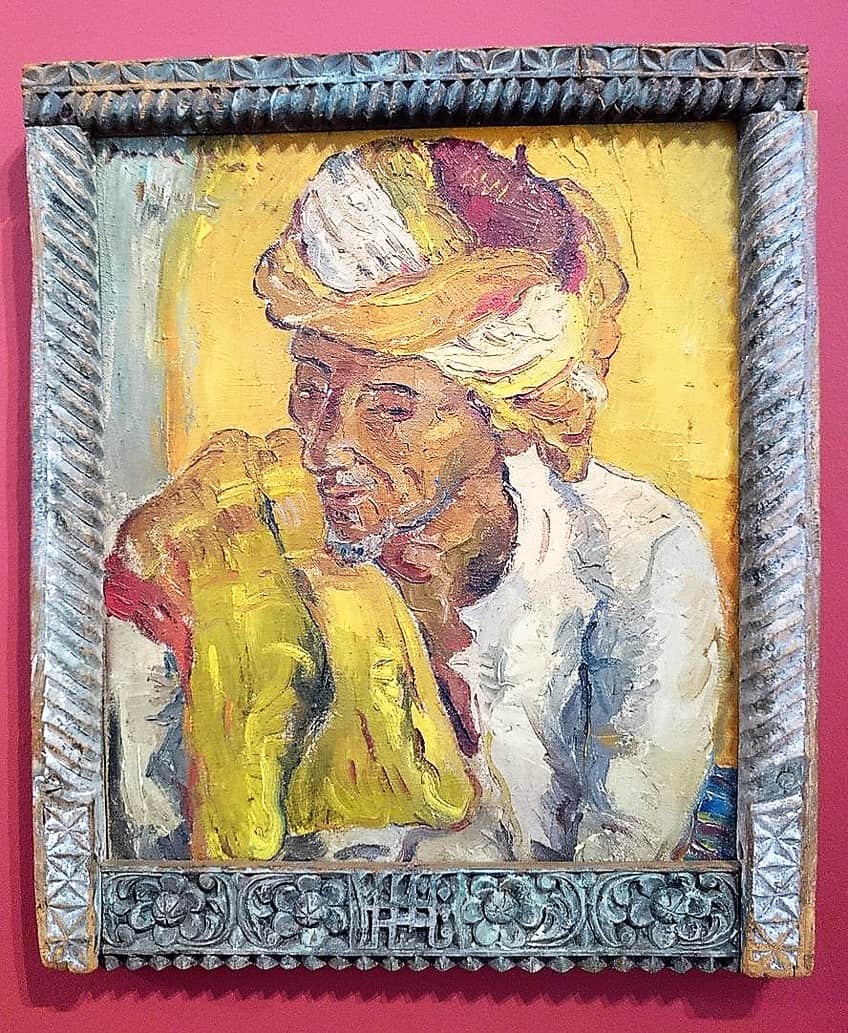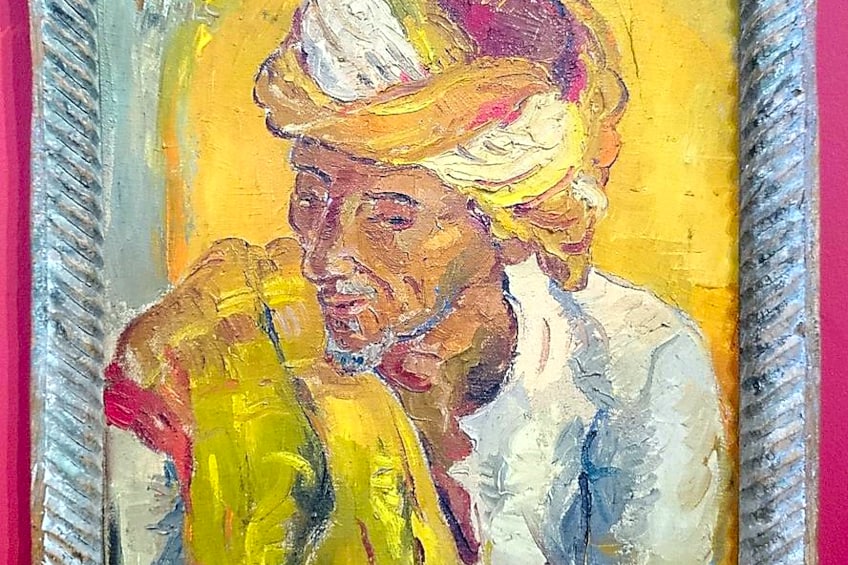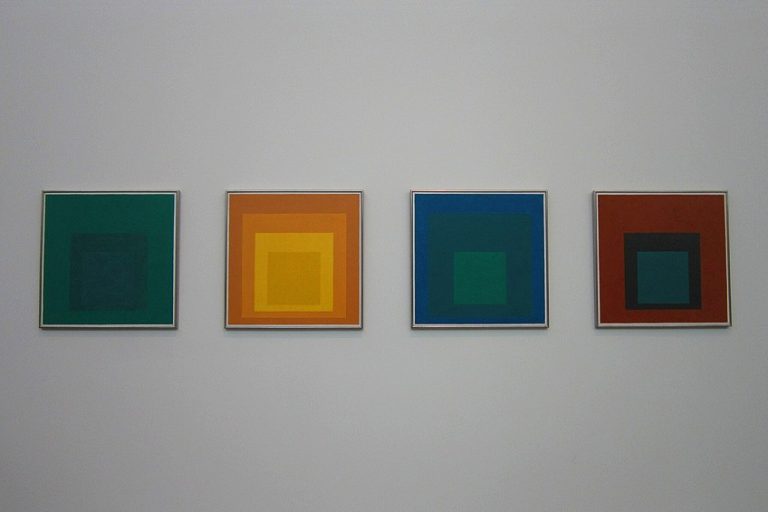Irma Stern – Syncretic Mother of South African Modernism
Irma Stern (1894 – 1966) was a leading figure in South African modern art, renowned for her vibrant and expressive paintings, drawings, and sculptures. Throughout her career, Stern experimented with a variety of styles and techniques, forging a unique artistic voice that reflected her complex identity and the changing world around her. Today, Stern is recognized as one of the most important artists of her generation, whose work continues to captivate and inspire audiences around the world. In this article, we will explore the life, work, and legacy of this famous South African painter, delving into the key themes and techniques that characterized her art, and examine her lasting impact on the world of modern art.
Artist in Context: Who Was Irma Stern?
| Date of Birth | 1894 |
| Date of Death | 1966 |
| Nationality | South African |
| Art Style | Neo-Expressionist |
| Notable Artworks | Congolese Woman (1946), Two Arabs (1945), and Summer Morning in Madeira (Mediterranean Scene) (1950) |
Irma Stern was a South African artist renowned for her bold and emotive style, which fused European modernism with African cultural influences. Stern’s art is characterized by vibrant colors, thick impasto, and a sense of passionate intensity that reflects her fascination with the human experience.
Her subjects ranged from portraits of African people and wildlife to still lifes and landscapes, and her work often explored themes of identity, colonialism, and cultural exchange.
Despite facing discrimination as a Jewish woman in South Africa, Stern became a leading figure in the country’s art scene and her work has been exhibited and collected internationally. Her legacy continues to inspire artists and viewers alike, as she remains recognized as one of the most significant and innovative artists of the 20th century. Let us take a closer look at the life, training, and career of this prominent painter.
The Birth and Early Life of This Famous South African Painter
Irma Stern, one of South Africa’s most celebrated artists, was born in Schweizer-Reneke in the Western Transvaal, now known as North West Province, on 2 October 1894. She was the second of three children born to German-Jewish parents, who had emigrated from the town of Schweinfurt in Bavaria to South Africa in 1880. Stern’s father, Samuel Stern, was a successful merchant and a prominent member of the Jewish community in South Africa. Her mother, Olga, was an amateur painter and musician who encouraged her daughter’s artistic talents from a young age.
Growing up in a privileged household, Stern was exposed to European culture and education and was fluent in German, English, and Afrikaans.
Despite her privileged upbringing, Stern’s childhood was not without difficulties. She suffered from poor health and was often confined to her bed, where she developed a deep appreciation for art and literature. She also experienced the loss of her younger brother at the age of five, which had a profound impact on her emotional development.
Education and Early Career
Irma Stern’s artistic education and career spanned several continents and decades. When Stern was thirteen years old, her family moved to Cape Town, where she began to receive formal art lessons. She was enrolled in the Michaelis School of Fine Art at the University of Cape Town, where she studied under prominent South African artists such as John Hodgson (unknown date of birth and death) and Maud Sumner (1902 – 1985).
Her early works were influenced by the European Impressionists, but she also began to experiment with African motifs and patterns.
After the outbreak of the South African War (1899-1902) she returned to Germany with her family and continued her studies at the Weimar Academy, where she was exposed to the Expressionist movement and began to develop her own unique style.
The 1920s and 1930s
In the 1920s, Stern began to establish herself as a leading figure in the South African art scene. She participated in numerous exhibitions and became known for her bold use of color and her fascination with African culture and landscapes.

In the 1930s, Stern began to travel extensively throughout Africa and Europe, gathering inspiration and honing her artistic vision. She visited Zanzibar, the Congo, and other parts of Africa, painting portraits of local people and wildlife. She also traveled to Europe, where she was exposed to the work of the Fauvists and other modernist artists.
Throughout her career, Stern continued to experiment with new styles and techniques, incorporating elements of Cubism and Surrealism into her work. She also explored a range of themes, from still lifes and landscapes to portraits of African people and scenes of everyday life.
Artistic Characteristics of Irma Stern
Irma Stern’s artistic characteristics were revolutionary in several ways, and they continue to inspire artists today. One of the most striking aspects of Stern’s work is her use of color. Her paintings are characterized by rich hues and daring contrasts, which give her work a sense of touching intensity and depth. Her color palette often includes vivid blues, greens, and yellows, as well as earthy reds and browns. These colors are applied with a thick impasto, which gives her paintings a sense of texture and physical presence.
Stern’s brushwork is also highly expressive. Her paintings are marked by loose, gestural strokes that convey a sense of movement and energy. She often used a palette knife to apply paint, creating a rough, textured surface that adds to the emotional impact of her work.
Another important aspect of Stern’s art is her incorporation of African motifs and designs. She was fascinated by the cultural heritage of South Africa, and her paintings often include traditional African textiles, masks, and other decorative elements. These motifs add a sense of depth and richness to her work, while also emphasizing the importance of African culture and identity.
What Made Her Such a Revolutionary Artist?
Stern’s work was revolutionary for several reasons. First, she broke away from the European tradition of painting, which emphasized realistic representation and subdued colors. Instead, she embraced a bold, expressive style that emphasized emotion and individuality. This made her work highly original and distinctive, and helped to establish a new style of modernism in South Africa.

The second reason why Stern was such an artistic pioneer was due to her incorporation of African motifs and patterns helped to establish a new sense of cultural identity in South African art.
By celebrating the cultural heritage of the country’s indigenous people, she helped to create a sense of pride and belonging among South African artists and viewers.
Finally, Stern’s work was revolutionary because of its emotional impact. Her paintings are characterized by a sense of intensity and raw emotion, which speaks to the human experience in a profound and universal way. This emotional impact continues to resonate with viewers today, making her work as relevant now as it was during her lifetime.
Important Exhibitions by Irma Stern
Irma Stern had a significant impact on South Africa’s art scene with her spirited and uninhibited paintings. Two of the most important exhibitions of her lifetime were The Ethnographic Exhibition in 1923 and The Irma Stern Retrospective Exhibition in 1967.
These exhibitions were pivotal in shaping the public’s perception of Stern’s work and had a lasting impact on South African art history.
The Ethnographic Exhibition (1923) in Johannesburg
The Ethnographic Exhibition was held in Johannesburg in 1923 and featured a range of Stern’s paintings depicting African people, landscapes, and cultural motifs. The exhibition was controversial at the time, as many critics were unaccustomed to seeing African culture depicted in such a bold and expressive way. However, the exhibition was also praised for its celebration of African culture and identity, which was a radical departure from the Eurocentric art tradition prevalent in South Africa at the time.
One of the most influential critics of the exhibition was Rudolf Popham (1887 – 1970), a British art critic who was living in South Africa at the time. Popham praised Stern’s paintings for their “sincerity, courage, and vitality,” and for their ability to capture the emotional intensity of African culture.
Popham also noted that Stern’s work represented a new direction in South African art, one that was more focused on individual expression and cultural identity.
The Irma Stern Retrospective Exhibition (1967) in Johannesburg
The Irma Stern Retrospective Exhibition was held in Johannesburg in 1967, and it showcased over 200 of Stern’s paintings from throughout her career. The exhibition was a huge success, drawing large crowds and widespread critical acclaim. Critics praised Stern’s work for its emotional impact and its ability to capture the essence of African culture and landscapes.
One of the most influential critics of the exhibition was Neville Dubow (1927 – 1998), a South African art critic who was known for his support of modernism in South African art. Dubow praised Stern’s work for its “richness of color and texture” and for its ability to “distill the essence of Africa” into its paintings
Dubow also noted that Stern’s work had a profound impact on South African art, helping to establish a new style of modernism that was more focused on individual expression and cultural identity.
The Permanent Collection at the Irma Stern Museum
In 1972 the house where Irma Stern lived in Rosebank, Cape Town was transformed into a museum dedicated to exhibiting her works and educating the public about her life and career. In addition to its collection of her paintings, the museum also showcases various artifacts and furnishings that she collected throughout her travels and that appear in her artwork. The museum has a rich calendar of events that not only focus on Stern, but also on developing and showcasing South African art.

Irma Stern Paintings
In this section of the article, we will complete a comparative visual analysis to understand how Irma Stern worked. We will examine two of the most well-known Irma Stern paintings: Arab Priest (1945) and Two Arabs (1945). These two paintings, created in the same year and with similar subject matter, offer a fascinating glimpse into Stern’s artistic process and her exploration of themes of cultural identity and representation.
A Closer Look At Irma Stern Paintings: Arab Priest (1945) and Two Arabs (1945)
Arab Priest is a portrait of an elderly Arab man, his face rendered in Stern’s signature expressive style, with thick brushstrokes and bold colors. He wears a white turban and robes, and his face is framed by a bushy white beard. The background is a deep blue, which creates a sense of depth and contrasts with the warm tones of the man’s skin.
The painting exudes a sense of dignity and reverence, as Stern captures the wisdom and spirituality of her subject.
In Two Arabs, Stern depicts two young men, also wearing traditional Arab dress, standing in front of a textured, orange-hued background. The two men stand close together, one with his hand resting on the other’s shoulder. Their faces are rendered in Stern’s characteristic style, with thick, expressive brushstrokes and a vivid color palette. The painting exudes a sense of intimacy and friendship, capturing the bond between the two men. Comparing these two paintings, we can see similarities in the use of color and brushwork. Both paintings feature a bold, expressive style, with thick brushstrokes and vibrant colors.
The backgrounds of both paintings also play an important role, creating a sense of depth and contrast with the figures in the foreground. However, there are also notable differences between the two paintings. While Arab Priest focuses on a single figure, creating a sense of dignity and reverence, Two Arabs depicts a scene of camaraderie and connection between two friends.
Furthermore, both paintings engage with themes of cultural identity and representation, highlighting Stern’s interest in depicting the people and cultures of the world around her. The subject matter of both paintings, Arab men dressed in traditional attire, reflects Stern’s fascination with non-Western cultures and her desire to represent them in her art.
Book Recommendations About Irma Stern
Irma Stern, one of South Africa’s most celebrated artists, lived a fascinating life and left behind a rich legacy of art that is admired around the world. For those interested in learning more about her life and work, there are several excellent books that provide a wealth of information and insight.
Irma Stern: A Feast for the Eye by Marion Arnold and Irma Stern (1995)
This book is a comprehensive overview of Stern’s life and work, featuring over 400 color illustrations of her paintings, drawings, and sculptures. It includes essays by several experts on Stern’s art, as well as a detailed chronology of her life. “A Feast for the Eye” is a great introduction to Stern’s work for those who are new to her art, and a valuable resource for scholars and collectors who want to delve deeper into her life and career.
- Seminal monograph by a leading South African art historian
- Sympathetic analysis of Stern's understanding of the Africa of her era
- Ideal introduction to Stern's life and art with over 100 color plates
Irma Stern: African in Europe – European in Africa by Sean O’Toole (2021)
Irma Stern: African in Europe – European in Africa by Sean O’Toole is an insightful and engaging exploration of one of South Africa’s most beloved artists. The book delves into the complex themes and issues that shaped Stern’s life and work, exploring her dual identity as a South African of German-Jewish descent who spent much of her life traveling between Europe and Africa. Through a series of essays and interviews, O’Toole provides a nuanced and in-depth analysis of Stern’s art, examining its roots in her personal experiences and the historical and cultural contexts in which it was created. Be warned though that O’Toole’s approach reflects his journalistic roots, so this book may be challenging to readers who expect a more scholarly study of Stern and her work.
- Explores Stern's life and work through essays and interviews
- Emphasizes the cultural and political aspects underlying Stern's art
- The journalistic style may frustrate readers expecting a monograph
Irma Stern and the Racial Paradox of South African Modern Art by LaNitra M. Berger (2022)
This book offers a critical analysis of Stern’s work and its place in South African art history, particularly in relation to issues of race and identity. Berger argues that Stern’s art was deeply rooted in her experiences as a white Jewish woman living in apartheid-era South Africa, and that her work can be seen as a reflection of the complex racial and cultural dynamics of the country during that time. This book is a thought-provoking exploration of Stern’s legacy and its relevance to contemporary debates about race and identity.
- Insightful analysis of Stern's contribution to African Modernism
- Combines interviews and archival research with visual critique
- Stern's legacy in Contemporary Decolonialism and Feminism
In conclusion, Irma Stern was a pioneering artist whose work continues to captivate and inspire audiences around the world. Her audacious use of color, emotive brushstrokes, and striking compositions marked a departure from the prevailing artistic styles of her time, and helped to establish a distinctly South African modern art tradition. Through her art, Stern grappled with complex issues of identity, culture, and history, creating a body of work that is both deeply personal and universally resonant. Her legacy continues to influence and shape contemporary South African art, and her place in the canon of modern art is secure.
Frequently Asked Questions
How Did Irma Stern’s Childhood Shape Her Art?
Irma Stern’s childhood and early life were marked by a combination of privilege and adversity, which helped shape her unique artistic vision. Her exposure to European culture and education was balanced by her experiences with illness and loss, which gave her a deep appreciation for the emotional power of art. Her early artistic training laid the foundation for her groundbreaking work in her later years, which would earn her international recognition as one of South Africa’s most important artists.
What Makes Irma Stern’s Art So Revolutionary?
Irma Stern’s artistic characteristics were revolutionary in several ways. Her use of color, expressive brushwork, and incorporation of African motifs helped to establish a new style of modernism in South Africa, and her emotional impact continues to inspire artists and viewers alike. Her legacy as one of South Africa’s most important artists continues to grow, as her work remains as relevant and impactful today as it was during her lifetime.
Which Were the Two Most Important Exhibitions by Irma Stern and Why?
Two of the most important exhibitions of her lifetime were the Ethnographic Exhibition in 1923 and the Irma Stern Retrospective Exhibition in 1967. Both of these exhibitions were significant in shaping the public’s perception of Stern’s work and her impact on South African art history. They helped to establish her as a pioneering figure in modern South African art, one whose work celebrated the richness and diversity of African culture and identity. The exhibitions also helped to inspire a new generation of South African artists, who would go on to further explore the themes and styles that Stern had pioneered.
Nicolene Burger is a South African multi-media artist, working primarily in oil paint and performance art. She received her BA (Visual Arts) from Stellenbosch University in 2017. In 2018, Burger showed in Masan, South Korea as part of the Rhizome Artist Residency. She was selected to take part in the 2019 ICA Live Art Workshop, receiving training from art experts all around the world. In 2019 Burger opened her first solo exhibition of paintings titled, Painted Mantras, at GUS Gallery and facilitated a group collaboration project titled, Take Flight, selected to be part of Infecting the City Live Art Festival. At the moment, Nicolene is completing a practice-based master’s degree in Theatre and Performance at the University of Cape Town.
In 2020, Nicolene created a series of ZOOM performances with Lumkile Mzayiya called, Evoked?. These performances led her to create exclusive performances from her home in 2021 to accommodate the mid-pandemic audience. She also started focusing more on the sustainability of creative practices in the last 3 years and now offers creative coaching sessions to artists of all kinds. By sharing what she has learned from a 10-year practice, Burger hopes to relay more directly the sense of vulnerability with which she makes art and the core belief to her practice: Art is an immensely important and powerful bridge of communication that can offer understanding, healing and connection.
Nicolene writes our blog posts on art history with an emphasis on renowned artists and contemporary art. She also writes in the field of art industry. Her extensive artistic background and her studies in Fine and Studio Arts contribute to her expertise in the field.
Learn more about Nicolene Burger and the Art in Context Team.
Cite this Article
Nicolene, Burger, “Irma Stern – Syncretic Mother of South African Modernism.” Art in Context. September 19, 2023. URL: https://artincontext.org/irma-stern/
Burger, N. (2023, 19 September). Irma Stern – Syncretic Mother of South African Modernism. Art in Context. https://artincontext.org/irma-stern/
Burger, Nicolene. “Irma Stern – Syncretic Mother of South African Modernism.” Art in Context, September 19, 2023. https://artincontext.org/irma-stern/.














